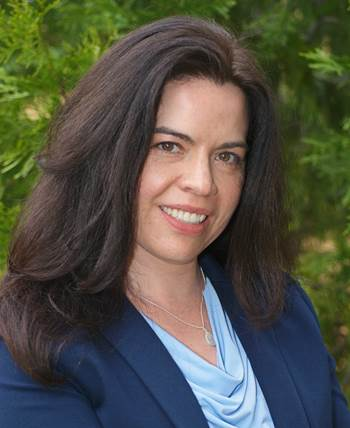When we started “Faces of EHS” back in January 2020, we envisioned it as a profile series in which we could chat with professionals who are on the front lines of environment, health, and safety (EHS) work. It was our goal to get many perspectives on the breadth and scope of what EHS professionals are doing and learn more about their respective work and how they are making an impact in EHS.
Now, after catching up with more than 28 exceptional EHS pros, we at the EHS Daily Advisor would be remiss if we did not share some of the insights we have gleaned about current trends and where our EHS pros believe the industry is headed. We were fortunate enough to chat with myriad EHS industry leaders, and as you read on, you will find some of our favorite insights and the emerging trends they believe will affect the future of the EHS profession.
For Roberta Smith, MSPH, RN, CIH, COHN-s, CIC, the Director of Worker Health for Cority Axion Health, she hopes that people continue to enter the EHS profession, especially women.
“We all know that EHS professionals tend to be behind-the-scenes professions and sometimes don’t get the recognition they deserve,” Smith told us. “A few years ago, I had a geeky moment at a fundraiser for the Girl Scouts of America. At their ‘Thin Mint’ dinner, where women are honored for their work in the community, an EHS professional was recognized for her leadership. I about leapt out of my chair. I stalked her on LinkedIn to say congratulations, and we crossed paths a few years later on an occupational health project.”
Smith also noted that beyond completing daily tasks, she believes it’s critical that people in the profession continue to look at scientific studies with critical eyes. “We have to start to understand what to do with the vast amounts of data that we have collected over the years,” she said. “With the COVID-19 experience, information has been coming at us from many directions, and I don’t think everyone is sitting down and looking at the information completely—looking at the source, how the study was done, and how that information could help or hinder EHS activities.”
BLR’s Young Safety Professional Excellence 2020 Award winner, Asha Roy, OTD, OTR/L, the Program Manager for the Safe Patient Handling and Mobility on the Workforce Safety team at Northwell Health, said the constantly changing healthcare delivery model is an emerging trend, as well as the need to work closer with EHS pros.
“Several services that were offered in a hospital setting with more resources available are now being offered in a patient’s home setting,” Roy shared. “This requires a totally different risk assessment, education, and implementation process to safely manage. As more and more organizations are realizing the relevance of appropriately designed workspaces/buildings, there is now a heightened awareness to collaborate with workforce safety professionals. This helps offer input with safety as a priority when the building blocks are being planned, helping prevent injuries through innovative and safe designs.”
Eileen Woodbury, Founder and Principal of Woodbury Consulting Group, has seen firsthand how taking EHS programs beyond compliance can result in great outcomes for both the environment and business—and has also witnessed too many hazmat responses gone wrong. As a result, she has seen an increasing switch from boilerplate or template-style written plans and programs to site-specific plans and programs.
“This may seem like a trivial trend—it is not,” she informed the EHS Daily Advisor. “I’ve been present for too many emergency responses gone bad as a hazardous materials specialist. When the site is returned to the facility to resume operations, we often see these boilerplate plans with no clear procedures or steps for important considerations, from on-site and off-site notification to evacuation, first aid, and a safe incident approach to gather further information. The lack of site-specific emergency response procedures with clear lines of responsibility for the facility response team to follow and act upon to their level of capability is a true problem.”
Woodbury added that there is a dire need for facilities to act as their own response team to safely evacuate and then safely size up the situation through investigating the emergency. “Even though a facility may not have trained any capable hazardous materials technicians or specialists, there is space to act as a first responder through the awareness or operational levels of the Occupational Safety and Health Administration (OSHA) Hazardous Waste Operations and Emergency Response (HAZWOPER) standard. The more information provided to the first responders (e.g., fire department or other contractor), the quicker the emergency can be mitigated through containment, control, or stopping the release. These critical and timely efforts aid in reducing the potential impact of the release on- and off-site.”
Khalilah Guya, the CEO, Founder, and Principal Consultant at EHS Compliance Services, agrees, adding that the definition of sustainability is expanding and becoming more inclusive. “This is not only of the environmental footprint but also the health and safety of the people with whom an organization works—whether employees, contractors, or visitors,” Guya explained. “Investors and industry alike are beginning to understand that sustainable organizations are those that eliminate and mitigate risks, including those that result in injuries and illnesses to their workers.”
According to Dominic Cooper, some people are fearful of saying anything about safety, so psychology can be an effective tool for safety leaders to use. In fact, behavior-based safety has become so popular that Cooper has been tapped by numerous clients worldwide to help them design and implement it in their facilities.
“Psychology-based behavioral safety is about finding ways to give people a voice using appropriate mechanisms, so that hazards and safety issues can be safely reported and discussed,” Cooper shared. “Additionally, the most positive [trend] is to see the collective focus on the prevention of serious injuries and fatalities (SIFs) in the workplace. Long may it continue.”






